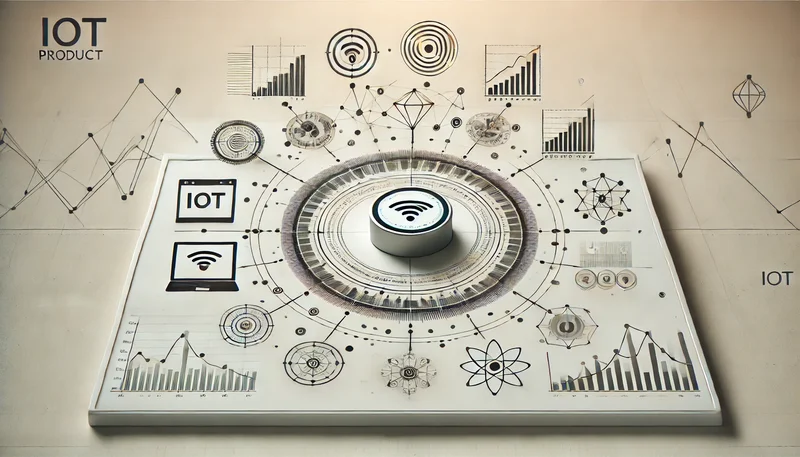Okay, friends, buckle up, because I've just stumbled across something that's making my circuits hum (yes, I'm talking about my brain!). Forget everything you thought you knew about IoT security. We're on the cusp of a silent revolution, and it's all happening in the cloud.
Researchers Jincheng Wang and Nik Xe are about to drop a bombshell at Black Hat Europe: a new way to breach IoT devices en masse, without needing a single vulnerability or IP address. Can you even imagine? It’s like discovering a hidden back door into every connected toaster, thermostat, and turbine on the planet. And the key? Cloud management.
See, the dirty little secret of IoT is how these devices prove they are who they say they are to the cloud. Routers, sensors – they don't have fancy authentication methods. They rely on static data, things like serial numbers (SN) or MAC addresses. And, as Wang and Xe have demonstrated, those identifiers are surprisingly easy to snag or even brute-force. Many manufacturers still don't treat serial numbers or MAC addresses as sensitive information. It's wild! Once an attacker has that info and reverse engineers how the cloud server authenticates a device, they can impersonate any device.
This isn’t just about hacking your neighbor's smart fridge, people. This is about taking control of entire industrial systems, bypassing firewalls, and wreaking havoc from within. Wang explains that this impersonation competes with the legitimate cloud management channel, letting attackers send administrative commands through the cloud service to the actual device. Even if that device is behind a firewall or disconnected from the web! It’s like whispering commands directly into the machine's ear, bypassing all its defenses.
A Paradigm Shift in Security
So, what's the answer? Wang and Xe suggest a fundamental shift in how IoT devices authenticate. Instead of relying on easily spoofed identifiers, cloud platforms need to implement checks for IP address changes and require additional authentication. Or, even better, generate device credentials using a random UUID (Universally Unique Identifier) that's bound to the cloud management app. "They can create a random number as a UUID, and this number is binded with the app instead of a serial number or MAC address that is easy to brute force. This number would be random, and unknown to attackers," Wang says.
This isn't just a patch; it's a philosophical change. We need to move away from trusting static identifiers and embrace dynamic, unpredictable authentication methods. It's like moving from a simple lock and key to a multi-factor authentication system for the physical world.

And the urgency is real. Wang cautions that attacks through these cloud channels are hard to trace, and manufacturers often quietly fix them to avoid reputation damage. “So the lack of public, large-scale cases does not necessarily mean [similar attacks] are not happening.” He thinks that "these cloud channels are still widely overlooked. They affect many devices, are hard to patch, and any attackers [and] any attacks through them are extremely difficult to trace." How many breaches are going unnoticed right now?
This brings me to the really exciting part: Edge AI. Imagine every IoT device equipped with its own miniature AI, capable of detecting anomalies, predicting failures, and even defending itself against attacks. This isn't science fiction, folks! We're already seeing the rise of edge language models (ELMs), small, domain-specific AI that can run directly on IoT devices. According to a recent Dark Reading article, IoT Devices Open to Silent Takeover Via Cloud Firewalls, cloud-managed IoT devices are vulnerable to silent takeover.
Steve Tateosian, senior vice president of Infineon‘s IoT, compute, and wireless business unit, points out that ELMs are more accurate than larger language models (LLMs) because they're specifically trained for their task. "You have less concern that you’re going to get some hallucination, or something that is just wrong coming out of the model," he said. This means our future IoT devices won't just be connected; they'll be intelligent, autonomous, and secure.
Think about it: a network of smart sensors constantly monitoring the environment, detecting threats, and adapting in real-time. A factory floor where robots collaborate seamlessly with humans, anticipating their needs and ensuring their safety. A world where our homes, cities, and industries are interconnected, intelligent ecosystems, constantly learning and evolving.
But with great power comes great responsibility. As we build these intelligent systems, we need to ensure they're aligned with our values. We need to build in safeguards against bias, discrimination, and misuse. We need to ensure that these technologies empower us, rather than control us. This is the kind of breakthrough that reminds me why I got into this field in the first place, because the potential to improve lives is staggering.
